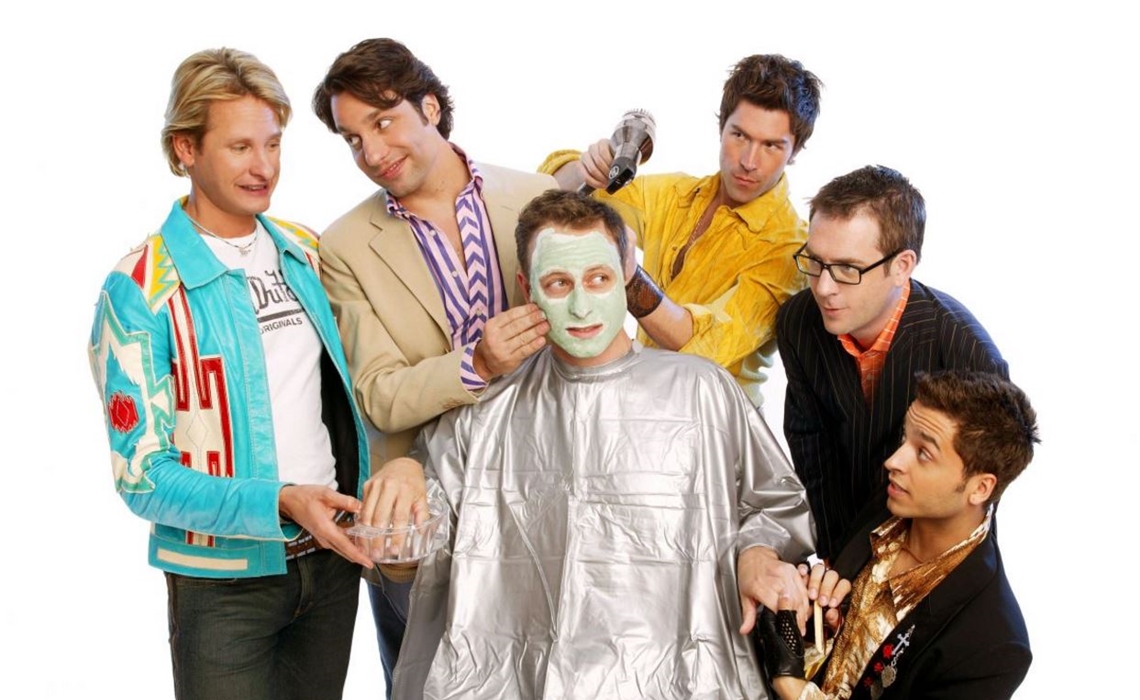GQ made waves for the first time in a while this week when the struggling magazine named Colin Kaepernick as its “Citizen of the Year.” Many were angry. I suppose some were shocked. SJWs weren’t satisfied, because let’s be honest, they’re never satisfied…
I’m neither happy, sad, angry, nor confused about any of this. I’m rather impressed. In bestowing Mr. Kaep with this most prestigious award, GQ went with the surprisingly more traditional choice to name an actual US citizen as their “Citizen of the Year”—because we’re just a nation of immigrants, right GQ? Instead of politicizing the first illegal immigrant they could find down in a Southern California barrio and bequeathing the “honor” onto them just to “stick it to Trump,” GQ went with a born and raised American—bold move, you guys.
My thinking is that if Caitlyn “Bruce” Jenner could win Glamour’s “Woman of the Year” and still manage to hold onto his manhood, literally, then why couldn’t a Mexican national win GQ’s Citizen of the Year here in the states? Anything is possible when you have no standards.
They say politics is downstream from culture and culture is downstream from art and fashion. Every chain reaction starts somewhere.
Growing up, I had an aunt who would always tell me I was “gorgeous” when we’d see each other for birthdays, holidays, and family gatherings. She used to call me “Mr. GQ,” and I always got a kick out of it. For some reason, I still imagined GQ through the lens of black suits, white shirts, and slim ties with slicked back hair: the Mad Men look of the 1950s. Classic. The mag used to be called Gentlemen’s Quarterly, after all.
The new “Mr. GQ,” Colin Kaepernick wears a turtleneck. He has no job. He blames the world for his problems and only looks in the mirror when shaping his mustache—the prototypical beta-male victim.

I was never a kid who grew up poring through the pages of pop culture magazines looking for ways to stand out or set trends, but I knew a few of those types from school. I still think the idea of following someone else’s rulebook to achieve a style that stands out is ironic and especially ridiculous when you look at the price tag involved, but this is coming from a guy who spends about 75% of his time out in the world in the same old blue uniform. I have very little need to cultivate a style for running to the grocery store, picking up my kids from school, or going out to eat with the only three girls in my life that I need outside of my mother on my days off. Besides, I’ve been known to wear jorts from time to time.
I get it. Not everyone cuts their jeans to make shorts, and many people’s livelihoods hinge on having a sense of style to maintain appearances with an impressive wardrobe. Even though I have no personal utility for something like GQ, I understand the market for the tool that it once was. Let’s take a look at when GQ was worth something and what went wrong.
A prototypical man in GQ wears a peach pastel colored romper these days and I think it all began the moment we started letting our mothers pick our clothes for us.
GQ’s humble beginnings trace back to 1931 under the original name of Apparel Arts. Apparel Arts wasn’t produced for mass consumption, but was rather an insider’s guide for people within the retail men’s fashion industry to use when giving advice to customers in department stores across the country. After years of men and their wives lifting Arts from stores to draw inspiration at home, the publication’s owners decided to start making money off what they had been letting slip through their fingers for free. Apparel Arts was rebranded, and Gentlemen’s Quarterly was born in 1958.
I guess things were good for a while—I wasn’t alive for it—but things got weird in general in the 1980s, and GQ was no exception. The mag’s turning point came in 1984 when Nonnie Moore was made fashion editor and the world’s most influential men’s fashion magazine decided that women should oversee how men dress. The move was the mass-scale equivalent of a teenager letting his mother pick his clothes for him, and that’s never a good idea. Not long after, the concept of the “metrosexual” was born, and the traditional man’s man became “so last season.” They say politics is downstream from culture and culture is downstream from art and fashion. Every chain reaction starts somewhere.
Just look at the messaging around you. My generation had to endure shows like Queer Eye for the Straight Guy that made a mockery of men being men. Your jeans aren’t “skinny” enough, boor. You need to do a better job of “manscaping,” lout. Disgusting pig, put down the newspaper and listen to the subtleties of Oscar Wilde’s prose. Women are pushed to be more like men and men are pushed to be more like women. Kids are taught gender confusion and are prescribed hormone blockers by abusive and deranged parents at increasingly young ages.

It’s not about color coordinating belts and shoes. It’s about herding sheep.
How many western males have been browbeaten away from their natural ways of being and bullied into metrosexuality, narcissism, and histrionic behaviors over the years? A prototypical man in GQ wears a peach pastel colored romper these days, and I think it all began the moment we started letting our mothers pick our clothes for us.
Do I believe GQ is solely responsible for the collapse of masculinity in the western world? No—but there’s no question that this sore of a publication is an integral part of it. If I’m being alarmist or if you think I’m overstating the influence fashion has on culture and society, then why does Google define a metrosexual as “a young, urban, heterosexual male with liberal political views, an interest in fashion, and a refined sense of taste”? There’s a reason GQ has branched out from being just about fashion. It’s not about color coordinating belts and shoes. It’s about herding sheep.
I told myself I wouldn’t get into Keith Olbermann when I began to pen this, so I’ll close with why I think GQ selected Kaepernick as their Citizen of the Year. Kaepernick’s downfall isn’t that he lacks the athleticism. It’s not because he’s black. It’s certainly not that he’s a modern-day civil rights leader either. The fall of Colin Kaepernick is that he is mentally weak and ill-equipped to lead men. Look into the communist feminazi he calls his girlfriend, Nessa Diab, for the evidence.
When Kaepernick’s career in football began to face adversity, he let a flag-burning social justice warrior representative of everything that’s wrong with millennials hammer home to him whose fault it was. I’ll bet she even dressed him in that stupid turtleneck he’s wearing on the GQ cover. He is a young, urban, heterosexual male cucked by his matriarch’s ultra-progressive views—a metrosexual “Prince Charming” if there ever was one. Colin may be “Citizen of the Year” for a regressive-left magazine with dwindling readership, but he should stop letting his mother dress him.
















